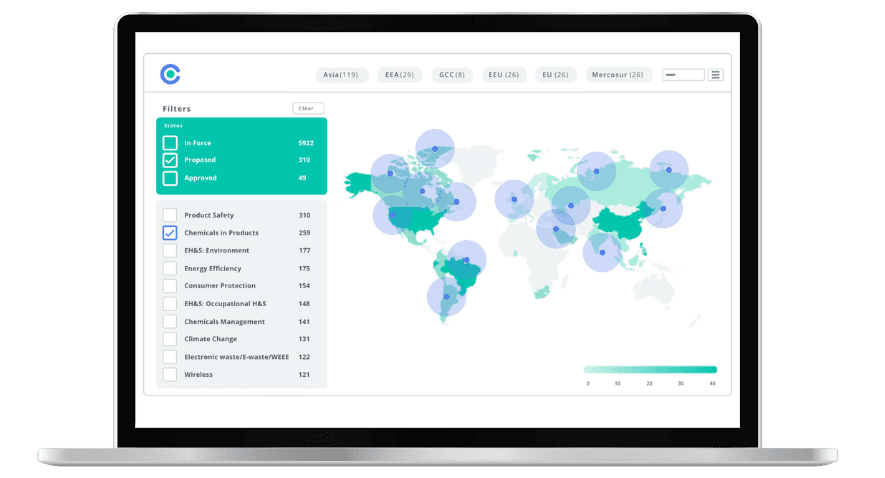
Key Radio Equipment Takeaways from REDCA 2025

This blog was originally posted on 5th June, 2025. Further regulatory developments may have occurred after publication. To keep up-to-date with the latest compliance news, sign up to our newsletter.
AUTHORED BY AARON GREEN, SENIOR REGULATORY COMPLIANCE CONSULTANT, COMPLIANCE & RISKS
I recently had the opportunity to attend the spring meeting of the REDCA (Radio Equipment Directive Compliance Association), held 14–15 May, 2025, in Prague. The event offered valuable insight into critical updates to various standards and regulations, all of which significantly impact manufacturers and stakeholders in the radio equipment industry. In this blog, I’ll share a concise overview of the key discussions and decisions from the meeting, focusing on cybersecurity harmonized standards, Japan MIC updates, CISPR developments, and the implications of the AI Act on radio equipment certification.
EU Harmonised Cybersecurity Standards for Radio Equipment
Starting in August 2025, radio equipment will need to comply with the cybersecurity requirements set under the EU Radio Equipment Directive. During the meeting, I learned that The EU Commission finally approved harmonised standards that provide the presumption of conformity with the cybersecurity requirements for self-assessment, EN 18031-1, 18031-2 and 18031-3. However, there are four Commission-imposed restrictions that have raised some concern.
We received clarification from the working group leader that self-assessment is allowed if the relevant harmonised standards of the EN 18031:2024 family is applied to the product and is not affected by the restrictions.
To break it down:
- Restriction 1 states that the explanatory sections named “rationale” and “guidance” cannot be relied upon for conformity assessment. This should have no impact on conformity, as it simply ensures consistent understanding of the explanatory text included in the standard.
- Restriction 2 states that presumption of conformity is voided if the user is permitted to forgo setting a password. To maintain the option of self-assessment, manufacturers must ensure that clauses 6.2.5.1 and 6.2.5.2 of the standard, which allow users to omit passwords, are not implemented.
- Restriction 3 addresses children’s products, stating that presumption of conformity with essential requirements is not assured if parental or guardian access control is not provided. To avoid mandatory third-party conformity assessment, clauses 6.1.3, 6.1.4, and 6.1.5 of the standard, which waive parental control implementation, should not be adopted.
- Restriction 4 mandates third-party conformity assessment for all equipment handling financial transactions, covered under EN 18031-3:2024, regardless of the product’s design. This requirement underlines the heightened scrutiny and security demands for financial transaction systems.
Updates from Japan’s MIC
A number of interesting updates came from Japan’s Ministry of Internal Affairs and Communications (MIC), especially around emerging tech.
New Technology
As of April 2025, technical requirements have been implemented for Reduced Capability (RedCap) and enhanced RedCap (eRedCap) for 5G IoT devices. These updates are particularly relevant for applications like industrial wireless sensors, surveillance cameras, wearables, and smart grids.
Furthermore, amendments to the Ordinance on Technical Standards for Conformity Certification of Specified Radio Equipment in December 2024 have streamlined licensing for 2.4 GHz and 5.7 GHz band spatial Wireless Power Transfer (WPT) systems for transport robots.
In February 2025, Japan also implemented regulatory measures for Tire Pressure Monitoring Systems (TPMS) and Remote Keyless Entry (RKE) systems operating in the 433 MHz band, aligning with international standards. (Reference: Japan Ministry of Internal Affairs and Communications publications and regulations)
Radio Wave Exposure
Japan has also introduced a regulatory framework aligned with international guidelines (IEEE, ICNIRP), setting a new limit of 2 mW/cm² for absorbed power density above 6 GHz.
Guidance Documents in English
I found it helpful that Japan has published a “Manual for Technical Regulations Conformity Certification System for Specified Radio Equipment” to provide guidance on the certification process, particularly for new entrants. Additionally, the Council of Registered Certifying Bodies has developed “Guidelines for the Utilization of European and U.S. Standards Test Data for 2.4GHz Band Wireless LAN, etc.”
The purpose of the guideline is to present a common view on the acceptance or non-acceptance of the US and European Standards test data for each characteristic test item of 2.4GHz band wireless LAN and similar technologies, based on Study Group and Ad Hoc Group discussions, to avoid differences among Registered Certification Bodies (RCBs).
Interested in learning more about the Japanese regulatory landscape? Our Japanese webinar in March 2025, Right to Repair: Overview of Key Global Regulations, is available on-demand!
IEC/CISPR Electromagnetic Compatibility (EMC) Standards
Looking ahead, the 3rd Edition of IEC/CISPR 32 (for emission requirements of multimedia equipment) and the 2nd Edition of IEC/CISPR 35 (for immunity requirements) are both expected in December 2026. Highlights from the revisions include:
- Alignment and update of Scope
- Incorporation of requirements related to termination of Power cables
- Incorporation of in situ methods and requirements
- Revision of TV Tuner Port requirements
- Inclusion of APD methods and limits
- Inclusion of conducted requirements below 950 MHz for Satellite Receiver
- Tuner Ports
- Inclusion of FAR and RVC methods and limits above 1 GHz
- DC Port Requirements
- MME with Radio Function
- Application of CISPR 16-4-4 model in the derivation of limits for MME with WPT
- Informative Annex explaining the changes above 1 GHz in Edition 2 Amendment 1
The 7th Edition of CISPR 12 on radio disturbance characteristics for vehicles, boats, and internal combustion engines, to be published in August 2025, also caught my attention.
The updated standard will include new test setups for electric vehicles (EVs) and hybrid electric vehicles (HEVs) in charging mode, defined antenna positions relative to the vehicle, and the deletion of statements concerning series surveillance and type approval.
Furthermore, annexes detailing measurement instrumentation uncertainty and networks for charging mode have been added. The vehicles, boats, and devices subject to this standard are now categorized into three groups with corresponding limits applied accordingly. (Reference: CISPR 12 ed. 7, published by the International Electrotechnical Commission.)
EU AI Act Impact on Radio Equipment Certification
One of the most talked-about items was the EU AI Act (Regulation (EU) 2024/1689), which has real implications for radio equipment that uses AI-based safety components. If such a device already requires third-party conformity assessment under the Radio Equipment Directive – and also integrates an AI safety feature – it’s now classified as a high-risk AI system.
In practical terms, this means the cybersecurity-related AI component must undergo compliance checks to ensure safety and reliability. It’s a significant development that manufacturers need to factor into their certification strategy going forward.
In February 2025, our experts broke down the latest AI regulatory trends in key markets, including: EU, UK, Singapore, US & China.
Conclusion
Attending the REDCA meeting in May gave me a comprehensive view of where the industry is heading. From unpacking the nuances of new cybersecurity requirements and understanding the AI Act’s influence on certification, to exploring Japan’s MIC updates for new technologies and CISPR’s evolving EMC standards, it’s clear that staying ahead of these developments is essential. I came away reaffirmed that the landscape for radio equipment is constantly shifting. Staying informed and proactive in implementing these changes will be vital for maintaining compliance and ensuring market access – and I hope this recap offers some clarity for others navigating similar challenges.
Stay Ahead Of Regulatory Changes in Radio Equipment
Want to stay ahead of regulatory developments in radio equipment?
Accelerate your ability to achieve, maintain & expand market access for all products in global markets with C2P – your key to unlocking market access, trusted by more than 300 of the world’s leading brands.
C2P is an enterprise SaaS platform providing everything you need in one place to achieve your business objectives by proving compliance in over 195 countries.
C2P is purpose-built to be tailored to your specific needs with comprehensive capabilities that enable enterprise-wide management of regulations, standards, requirements and evidence.
Add-on packages help accelerate market access through use-case-specific solutions, global regulatory content, a global team of subject matter experts and professional services.
- Accelerate time-to-market for products
- Reduce non-compliance risks that impact your ability to meet business goals and cause reputational damage
- Enable business continuity by digitizing your compliance process and building corporate memory
- Improve efficiency and enable your team to focus on business critical initiatives rather than manual tasks
- Save time with access to Compliance & Risks’ extensive Knowledge Partner network

Navigating the Digital Product Passport: What are Your Compliance Obligations?
Join us as we provide an overview of your key obligations under the Digital Product Passport, and how they apply across several major EU regulatory frameworks. Not to be missed!


